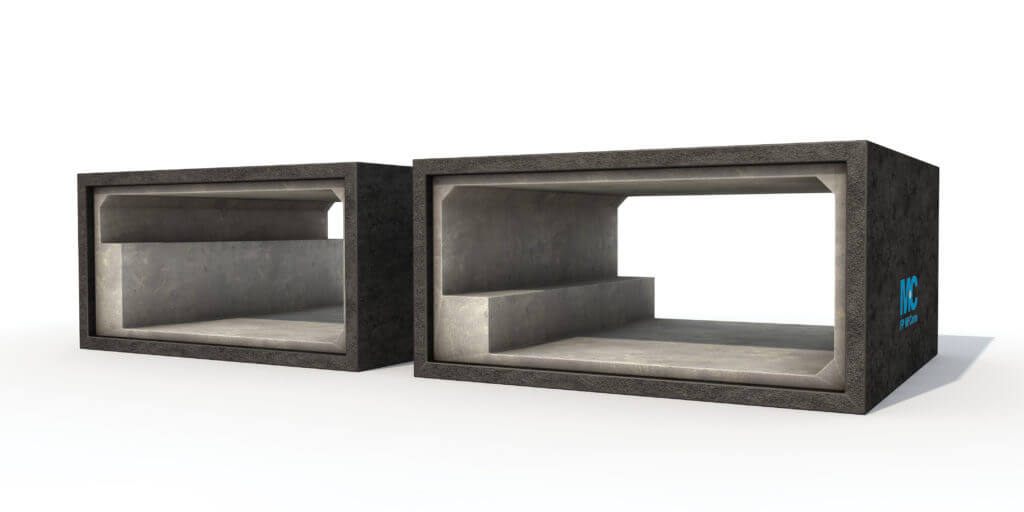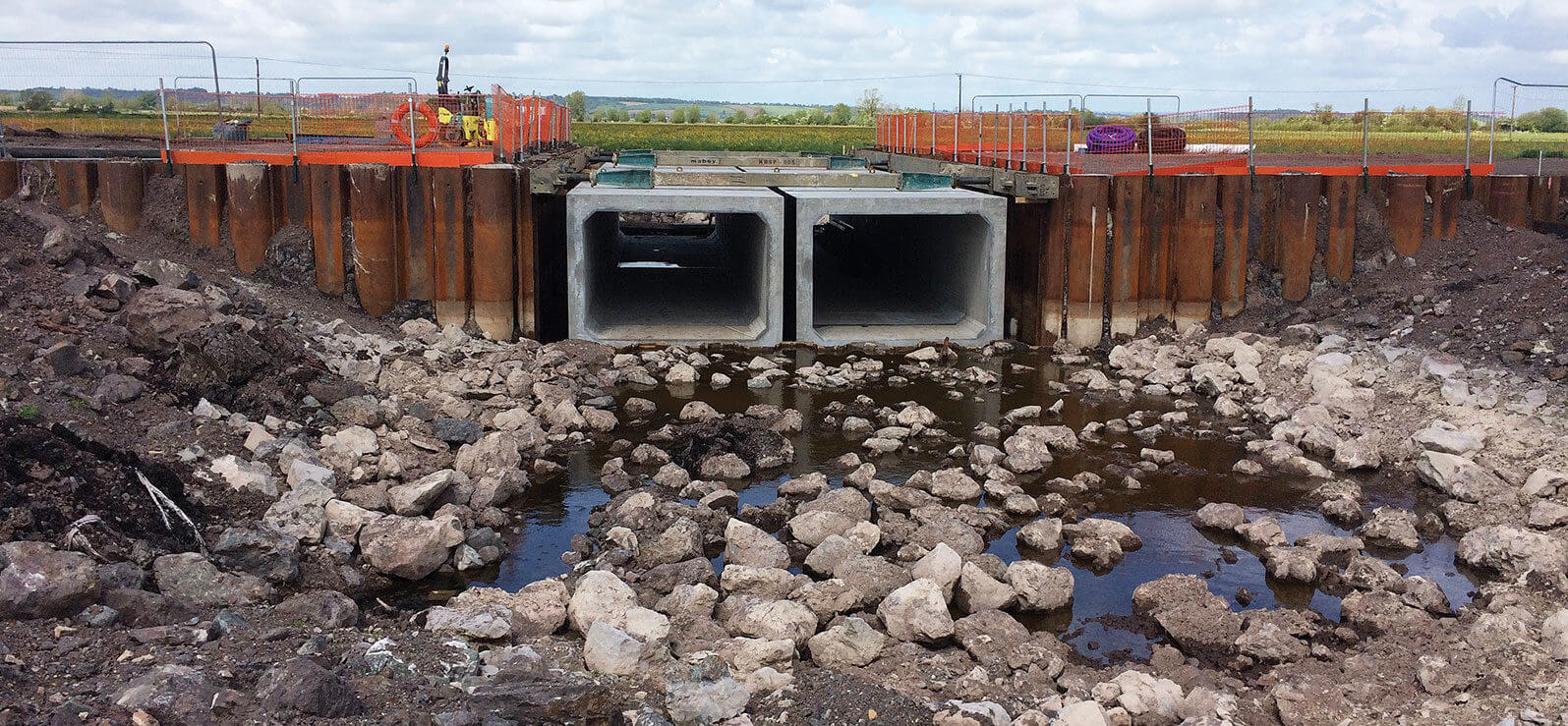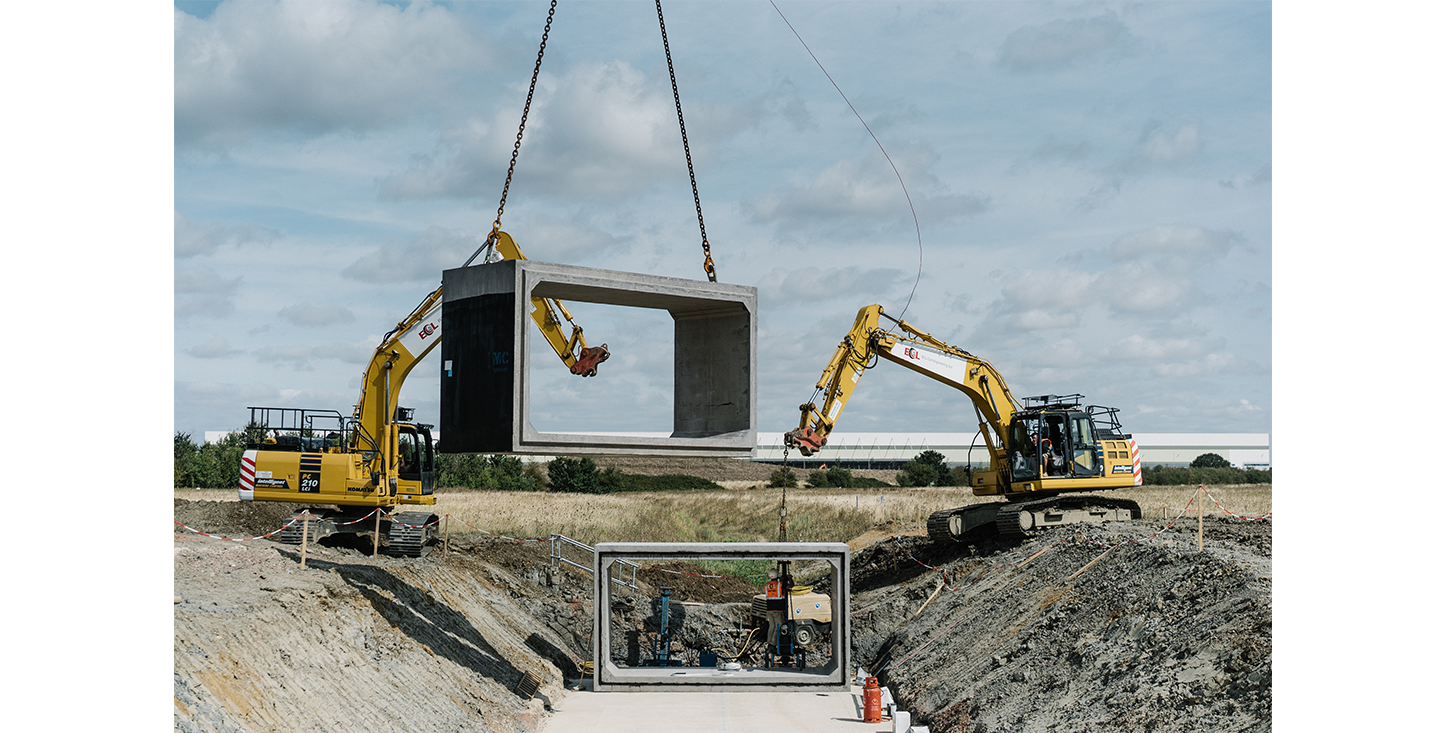BOX CULVERTS
GET IN TOUCH
The proven strength and performance characteristics of precast concrete box culverts, together with their excellent service life, make them ideal for a wide variety of civil engineering and construction applications.
Product Benefits:
Concrete culvert sections are manufactured in a variety of internal profiles and sizes and offer exceptional versatility in the uses to which they can be applied.
Unlike other materials such as steel, precast concrete box culverts do not require additional treatments to prolong their life or improve performance. The concrete surface will not rust and the smooth internal finish of the box culvert ensures an optimum flow of water through the concrete structure.
Precast concrete box culverts fulfil the current design life requirements for buried structures. They require minimum maintenance and provide many years of service, therefore making them the most cost-effective means of diverting watercourses. Furthermore, they are especially practical with the ever-present risk of corrosive elements in the water or soil.
Benefits of using precast concrete Box Culverts include:
Structural strength and long-life performance
This durable system meets the design life requirements for buried structures, and therefore, requires minimum maintenance.
Ease of installation
Easy to position in shallow or deep fill installations.
Flexible sizes and internal features
Customers can buy in a range of sizes and accommodate features such as dry weather flow channels, mammal ledges, and dual cell configuration units, plus tapered and skewed units if required.
Additional Features
Customers can add end walls, access points, vent holes, inlets, outlets, rungs, angles and splayed ends to any run of the concrete culvert. Starter bars and sockets can also be added to facilitate any additional casting on-site required as part of the finished work.
Box Culvert Applications:
- Diverting watercourse
- Attenuation and storage tanks
- Watercourse diversion
- Open channels
- Road crossings
- Pedestrian and vehicle subways
- Access shafts
- Service tunnels and ducts
- Sea Outfalls
- Conveyor protection
Typical Concrete Culvert
Units are available in internal span sizes from 1000mm to 6000mm and internal heights from 500mm to 3600mm, with unit lengths to a maximum of 2000mm dependent on final mould configuration.

Mammal Ledges
Cast in mammal ledges allows access through the culvert to wildlife without the requirement for extra site provisions.

Channels
Half-round (or equivalent) channels can be cast into the floor of the units at any position with a choice of equivalent half-round diameters.

Dual Cell
Used to facilitate separate water passage through the structure.

Benching
Combined with either a channel or cast as a “vee”, benching improves self-cleansing flow rates.

Specials
Bespoke units accommodating a variety of features can be manufactured to the customers’ design requirements.

Internal Dimensions (Based on flat invert culvert units)
Key: Flow area m²/ Discharge rate m³/sec

Please note: These figures are a guide only and will be dependent on the mould configuration used in manufacture. Discharge rates are calculated using Colebrooke-White equation for a fully wetted perimeter under uniform flow conditions and assuming a flat invert culvert unit. The assumed laying gradient (s) is 1:1000 with a roughness coefficient (k) of 0.3. Where different values may be required, please contact the office number below to discuss your specific requirements. The hydraulic design of a box culvert should always be undertaken by the overall scheme designer, as they can take into account the upstream and downstream conditions and other parameters such as freeboard, restriction due to silt build-up and need for the culvert to be free-flowing at all times. Due to the lack of this information, FP McCann will only give discharge rates for an idealised culvert, which may not suit the local conditions.







